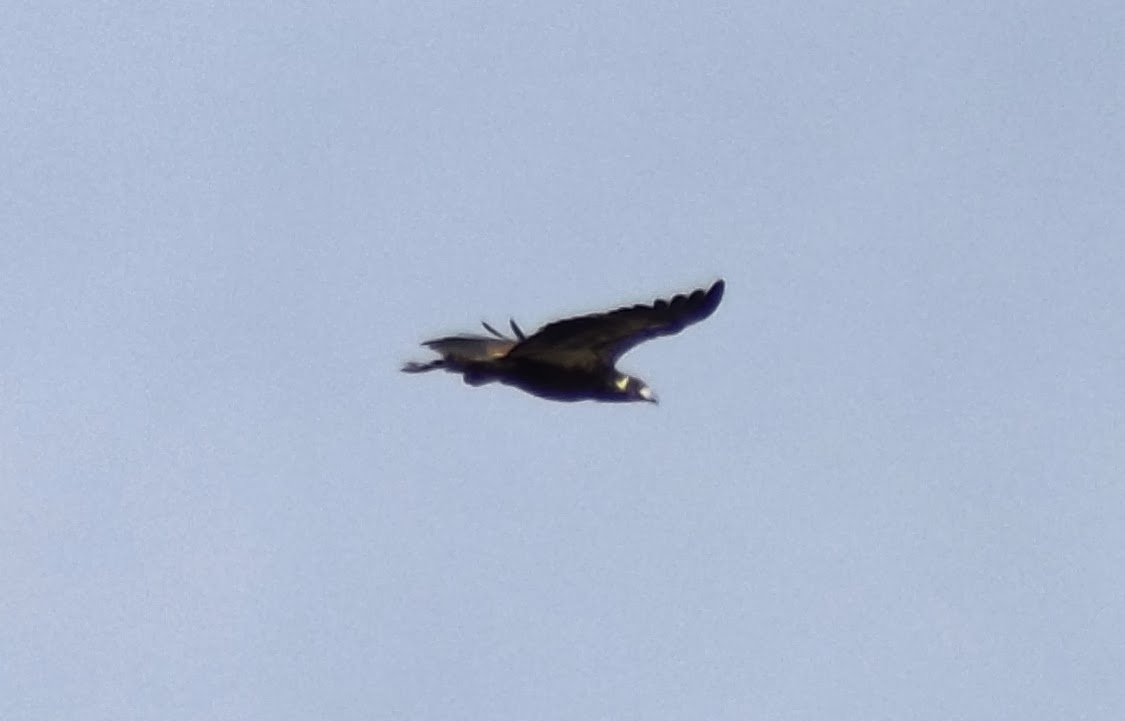 |
| Green-tailed Towhees like this one love to kick up leaf litter. |
1. Keeping your plants roots warm on frosty winter nights.
2. Keeping moisture in the soil longer after winter rains by shielding it from the desert sun.
3. Creating mulch as it breaks down.
 |
| White-crowned Sparrow-also a leaf kicker. |
5. Giving a "woodsy," feel to your yard, like a walk through Sycamore Canyon.
6. Keeps your micro-climate cooler by not absorbing the sun's heat as much as stones or exposed soil.
7. Provides cover for birds while they feed, its texture making it easier for birds to disappear against the landscape.
8. The leaves can act as a cup, capturing rainfall for wildlife.

As I was gathering leaves I knew I was being watched from above, but by who, or rather whom? It was a couple Great Horned Owls roosting in the cottonwoods, practically invisible, especially when their eyes are closed. As darkness closed in they bellowed deep, tuba-like hoots back and forth, oblivious to my presence.
 |
| Log pile after one car load removed |
While at the cattail pond I eyed a woodpile from a "trimming," of Gooding's Willow along the bank. I couldn't resist bringing the logs home to create a woodpile habitat, knowing its life by the pond was limited. It had already been home to a small snake, who left its shed skin as a keepsake. I was particularly interested in two round knotted pieces with small cavities as potential for improvised bird houses.
When I got home there was a message from Mrs. S to meet at our favorite eatery, Beyond Bread. I hadn't had time to remove the bags of leaves from the back seat, and the rich, intoxicating earthy aroma carried me back to my childhood, when we would rake leaves for hours, creating huge piles to jump into from the top of the"big rock," in our front yard in New England. The leaves became a huge pillow, breaking our freefall softly as they enveloped us with the bouquet of decomposition, a return to the soil. My grandmother would sometimes visit, working alongside us with an unstoppable work ethic, escaping the blisters we gained from inexperience. Her seventy-year old body was hard as nails, yet her heart glowed with warmth, especially toward her children and grandchildren. I'm glad now for my upbringing so close to nature. I remember turning logs over to find salamanders and all kinds of insects, of seeing deer pass through the yard, or finding a Pileated Woodpecker in the nearby swampy habitat. It was an area of ridges and fields, streams and lakes, where my canoe brought me closer to nature, and sometimes to risk and adventure. I suppose I can raise a cupful of leaves to my face and breath in the rich memories of yesteryear, of youth, of nature and all the gifts it has bestowed upon my soul. Come join me in appreciating the richness of our natural world and its wonderful earthly inhabitants.
 |
| Grandma O'Reilly and us sitting on the "big rock." |

































